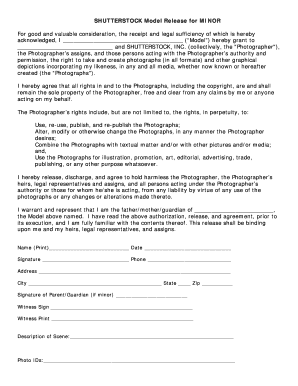Thinking about turning your videography hobbies into a source of income? Selling videos on Shutterstock is an excellent way to do just that! Whether you’re a seasoned creator or just starting out, Shutterstock provides a platform to showcase your work to a global audience. The best part? You don’t need prior experience in selling or marketing—just a passion for creating quality videos. In this guide, we’ll walk you through everything you need to know to get started, from understanding the platform to meeting the requirements, so you can begin earning from your videos with confidence.
Understanding Shutterstock’s Requirements for Video Contributors

If you’re considering adding your videos to Shutterstock, it’s essential to understand what they look for in contributors and their specific requirements. Shutterstock is a popular stock content platform that prides itself on offering high-quality, versatile media. To ensure your videos meet their standards, here are some key points to keep in mind:
1. Technical Specifications
Shutterstock has clear technical standards for video submissions:
- File Format: MP4 (preferred) or MOV.
- Codec: H.264 for MP4 files.
- Resolution: Minimum of 1920×1080 pixels (Full HD). Higher resolutions like 4K are encouraged for better visibility and earning potential.
- Frame Rate: Typically 24, 25, or 30 fps.
- Duration: Usually between 5 seconds and 60 seconds. Longer videos can be accepted if they are relevant and high quality.
- Bitrate: Keep a high bitrate to ensure good quality—usually around 15-20 Mbps for HD and higher for 4K.
2. Content Quality and Style
Shutterstock emphasizes high-quality, visually appealing videos. Here’s what they look for:
- Sharpness and Clarity: Avoid blurry or pixelated footage.
- Proper Lighting: Well-lit scenes without harsh shadows.
- Stable Shots: Use tripods or stabilization tools to prevent shaky footage.
- Color Balance: Accurate and vibrant colors without overexposure or underexposure.
- Content Relevance: Videos should have broad appeal and be useful for a variety of projects.
3. Content Guidelines
Beyond technical specs, Shutterstock has content guidelines to maintain a professional library:
- No copyrighted or trademarked material: Don’t include logos, brand names, or copyrighted content unless you have permission.
- No offensive or inappropriate content: Avoid violence, hate speech, or explicit material.
- Model and Property Releases: For recognizable people or private property, you need to provide appropriate releases, especially for commercial use.
4. Submission Process
Once your videos meet these requirements, submitting them is straightforward:
- Create a contributor account on Shutterstock.
- Follow their upload instructions and fill out metadata like titles, descriptions, and keywords.
- Submit your videos for review—Shutterstock’s team will assess whether they meet quality and content standards.
- Once approved, your videos go live and start earning royalties.
Understanding and adhering to these requirements is crucial to successfully selling your videos on Shutterstock. Take your time to produce high-quality content and familiarize yourself with their standards—your efforts will pay off when your videos start generating income!
Steps to Prepare Your Videos for Submission
Getting your videos ready for Shutterstock might seem daunting at first, but breaking it down into manageable steps makes the process much smoother. Here’s a simple roadmap to help you prepare your videos for submission:
Step 1: Review Shutterstock’s Submission Guidelines
Before you do anything, familiarize yourself with Shutterstock’s technical requirements. They specify details like file formats, resolution, frame rate, and content restrictions. Ensuring your videos meet these standards from the start saves time and avoids rejection later.
Step 2: Edit and Refine Your Footage
- Remove any unwanted segments or mistakes.
- Color correct your footage to ensure consistency and vibrancy.
- Stabilize shaky shots for a professional look.
- Add subtle transitions if needed, but avoid overdoing it.
Remember, clarity and visual appeal are key. Take the time to polish your videos so they stand out.
Step 3: Export Your Video Correctly
Use the recommended settings specified by Shutterstock, typically:
| Parameter | Recommended Setting |
|---|---|
| Format | MP4 (H.264 codec) |
| Resolution | 1920×1080 or higher |
| Frame Rate | 24, 25, or 30 fps |
| Bitrate | Variable bitrate for better quality |
Make sure your exported video is under the maximum file size limit, usually around 5 GB, and check that the audio is clear and at a proper level.
Step 4: Add Metadata and Descriptions
Prepare relevant titles, descriptions, and keywords. Be descriptive and precise to help buyers find your videos easily. Use keywords naturally and avoid keyword stuffing.
Step 5: Review Before Upload
Finally, watch your video from start to finish. Check for any technical issues, watermarks, or accidental content. Once everything looks perfect, you’re ready to upload!
How to Create High-Quality Videos for Shutterstock
Quality is king when it comes to stock videos. If you want your videos to sell well on Shutterstock, focus on creating content that is visually appealing, versatile, and professionally shot. Here are some tips to help you produce high-quality videos, even if you’re just starting out:
Invest in Good Equipment
- A decent camera with 1080p or 4K capabilities can make a huge difference.
- Use a tripod or stabilizer to keep your shots steady.
- Good lighting, whether natural or artificial, enhances the overall quality.
Plan Your Shots
Storyboarding and planning help you shoot purposefully. Think about what kind of footage is in demand—think lifestyle, business, nature, or technology—and craft your scenes accordingly.
Focus on Composition and Framing
Use the rule of thirds, maintain clean backgrounds, and ensure your subjects are well-framed. This makes your videos look professional and more appealing to buyers.
Keep Shots Clean and Simple
Avoid cluttered backgrounds or distracting elements. Clear, focused shots work better for stock footage because they’re more versatile and easier for buyers to incorporate into their projects.
Use Proper Lighting and Sound
Good lighting makes your footage pop. Natural light during the day is often the easiest, but if you’re shooting indoors, invest in softbox lights. Also, if your video includes sound, record high-quality audio or add clean, royalty-free music and sound effects later.
Be Mindful of Content Quality
- Ensure your footage is sharp, not blurry.
- Avoid over-processed or heavily edited clips that look unnatural.
- Capture a variety of angles and perspectives to give buyers more options.
Creating high-quality videos is about paying attention to detail and making sure your footage is usable and appealing. With practice and patience, you’ll develop a style and portfolio that stands out in the Shutterstock marketplace. Remember, every professional started somewhere—keep experimenting, and you’ll see your skills improve over time!
Uploading and Tagging Your Videos Effectively
Once you’ve created your videos and are ready to share them with the world, the next step is uploading and tagging them properly. This part might seem straightforward, but doing it thoughtfully can make a huge difference in how many people find and purchase your clips.
First things first: when you upload your videos to Shutterstock, make sure your files are in the correct format and meet their quality standards. Usually, this means high-resolution MP4 files with good lighting, clear audio, and minimal background noise. Taking the time to prepare your videos properly ensures they look professional and are more appealing to buyers.
Now, onto the crucial part—tagging. Think of tags as the labels that help your videos get discovered in searches. Use relevant, specific keywords that accurately describe what’s in your video. For example, if your clip shows a person working on a laptop in a cozy café, good tags might include coffee shop, remote work, digital nomad, working from home, and laptop.
Here are some tips for effective tagging:
- Be descriptive: Use words that clearly describe the content, mood, and setting.
- Use synonyms: Different buyers might search with different words, so include synonyms to broaden your reach.
- Think about the audience: Consider who might be looking for your video and what keywords they might use.
- Avoid over-tagging: Stick to relevant tags. Irrelevant or spammy tags can hurt your credibility and search ranking.
In addition to tags, write a compelling title and an engaging description. Your title should be concise but descriptive enough to grab attention, and your description can include more details about the scene, mood, or usage ideas. This combination helps buyers understand exactly what they’re getting and improves your chances of being found in searches.
Finally, double-check your uploads before submitting. Make sure the video plays correctly, the tags are accurate, and the description is free of typos. A polished upload not only looks professional but also boosts your credibility as a seller.
Tips to Increase Your Video Sales and Visibility
Getting your videos uploaded is just the beginning — now, you want to make sure they reach as many eyes as possible. Increasing your sales and visibility on Shutterstock takes a bit of strategy, but with some simple tips, you can start seeing better results.
Here are some effective ways to boost your video sales:
1. Consistently Upload New Content
The more quality videos you add, the higher your chances of being discovered. Regular uploads keep your portfolio fresh and give you more opportunities to appear in search results. Set a manageable schedule—whether it’s weekly or monthly—and stick to it.
2. Focus on Trending Topics and Popular Styles
Pay attention to current trends, seasonal themes, and popular styles. For example, videos related to remote work, sustainability, or health are in high demand. Creating content around these themes can help your videos stand out and attract more buyers.
3. Promote Your Videos Outside Shutterstock
Share your best clips on social media platforms like Instagram, LinkedIn, or Twitter. Building an audience outside of Shutterstock can lead to more exposure and even direct sales or licensing opportunities.
4. Engage with the Community
Participate in Shutterstock forums or groups to learn tips from other creators, stay updated on platform changes, and get feedback on your work. Networking can open doors to collaborations or helpful advice.
5. Optimize Your Metadata
Use relevant, high-volume keywords in your titles, descriptions, and tags. Research what buyers are searching for and incorporate those terms naturally into your metadata.
6. Offer a Variety of Content
Diversify your portfolio with different themes, styles, and formats. This not only appeals to a broader audience but also increases your chances of matching specific buyer needs.
Remember: Patience and persistence are key. Building visibility and increasing sales takes time, but by consistently applying these strategies, you’ll set yourself up for success in selling videos on Shutterstock.
Common Mistakes to Avoid When Selling Videos on Shutterstock
Jumping into selling videos on Shutterstock can be exciting, but it’s easy to make some common mistakes that might hold you back or even get your content rejected. Let’s talk about a few pitfalls to watch out for so you can set yourself up for success from the start.
1. Ignoring Shutterstock’s Content Guidelines
Every platform has rules, and Shutterstock is no different. Make sure you read their content guidelines thoroughly. This includes requirements for model releases, property releases, and avoiding prohibited content like copyrighted material or offensive imagery. Uploading content that doesn’t meet these standards can result in rejection or even account suspension.
2. Poor Video Quality
High-quality videos are key. Avoid shaky footage, poor lighting, or low resolution. Shutterstock prefers crisp, clear videos that look professional. Invest in a decent camera or smartphone with good video capabilities, and always review your footage before uploading.
3. Forgetting to Add Accurate Metadata
Metadata — including titles, descriptions, and keywords — helps buyers find your videos. Be descriptive and honest. Use relevant keywords that match what someone might search for, but avoid keyword stuffing. Good metadata can significantly boost your sales.
4. Overlooking the Importance of Niche Content
While broad content is always useful, focusing on a niche can help you stand out. Whether it’s outdoor activities, business scenes, or lifestyle topics, specialized content often sells better because it meets specific needs.
5. Not Uploading Consistently
Success on Shutterstock often comes from regular uploads. Don’t wait months between submissions. Building a portfolio gradually increases your chances of sales and helps you understand what works best.
6. Ignoring Model and Property Releases
If your videos feature recognizable people or private property, ensure you have the proper releases signed and uploaded. Failing to do so can lead to rejection, and in some cases, legal issues.
By avoiding these common mistakes, you’ll be on a better path to building a successful portfolio and making sales on Shutterstock. Remember, patience and attention to detail are your best friends here!
Conclusion and Next Steps for Aspiring Video Sellers
Congratulations! You’re now equipped with essential knowledge to start your journey as a video seller on Shutterstock. While it might seem overwhelming at first, remember that everyone starts somewhere. The key is to stay consistent, continually learn, and keep improving your content and skills.
Next steps to take:
- Create a plan: Decide what types of videos you want to produce based on your interests and market demand.
- Invest in quality equipment: Even a good smartphone can do wonders if used properly. Consider a tripod and good lighting.
- Learn about metadata: Spend time crafting accurate and keyword-rich titles and descriptions.
- Upload regularly: Consistency helps you build visibility and a diverse portfolio.
- Review Shutterstock’s guidelines: Stay updated to ensure your content always complies.
Remember, success doesn’t happen overnight. Keep experimenting, seek feedback, and learn from each upload. Over time, you’ll develop a style and a portfolio that attracts buyers. So go ahead — start filming, editing, and uploading. Your journey as a Shutterstock video seller is just beginning, and the possibilities are endless!


